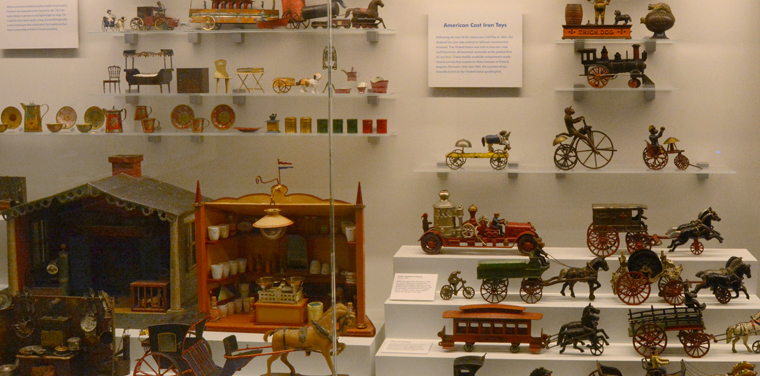
News
Factories in the Business of Play
September 25, 2016
At The National Museum of Toys and Miniatures, the Toys, Inc. story continues into the 19th century as toy making graduated from homes to factories and machines replaced manual labor. With low profit margins and a time-consuming process, the cottage industry had difficulty bringing home any bacon. On the other hand, factories were able to boost production with steam-powered engines and mechanized processes that churned out large quantities of toys.
To maintain their dominance in the market, Germany turned to tin toys (or maybe it was because they had depleted the country’s wood supply?). Tin was cheap to produce, lightweight to ship, and could be easily decorated. A win, win, win! Wanting a piece of the pie, America entered the toy production game with a readily available material from the country’s prolific railroad construction: cast iron. By utilizing an easily obtainable material, the U.S. could produce toys that were less expensive than German imports. Can you say cha-ching?!


Comments